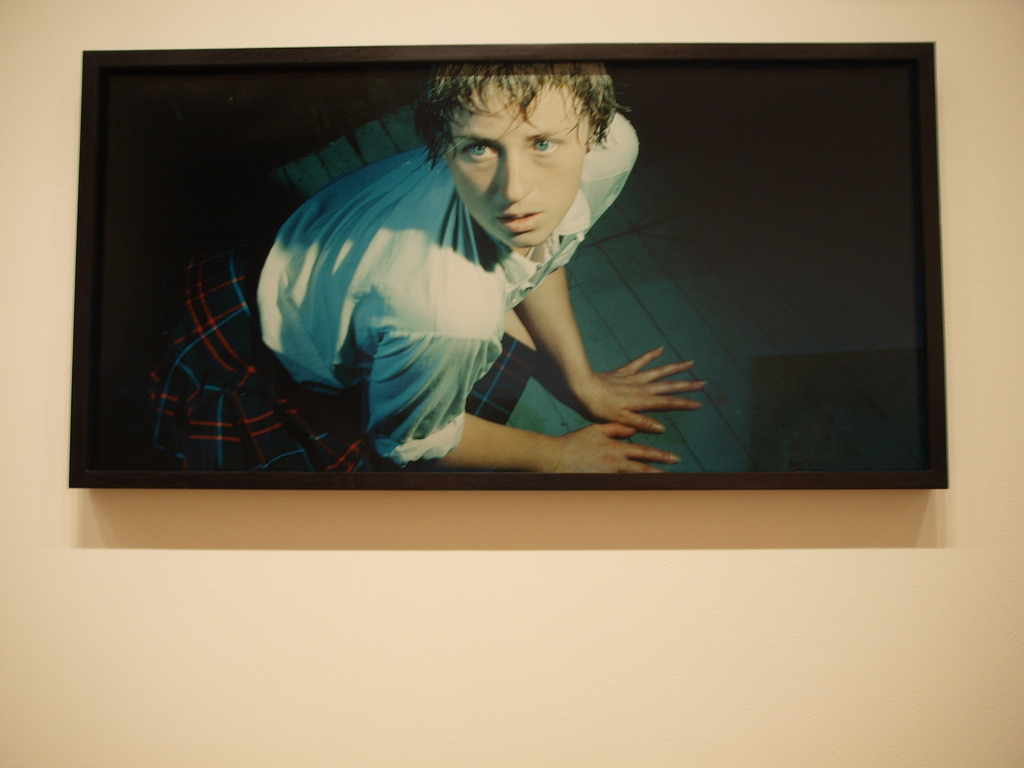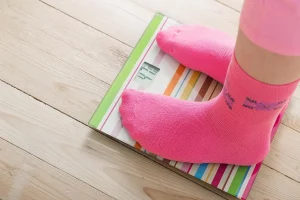
An image of Sherman’s Untitled Film Still, No. 92 (credit: tomislav medak/Flickr).
GO SEE the Cindy Sherman exhibit at The Broad Museum.
Go see the Cindy Sherman exhibit at the Broad.
If you consider yourself an actor, costumer, writer, photographer, make-up artist, or even an Instagram fashionista-slash-blogger, go see the Cindy Sherman exhibit at the Broad. If you consider yourself a feminist and are motivated to get people to think differently about how women are represented in the media, the Cindy Sherman exhibit at the Broad is for you.
I grew up with a very strong artistic and creative influence. My grandmother is a sculptor and most of my memories with her involve going to a new museum or exhibit and picking a post card — “Just one!” — of my favorite piece I saw that day. Having completed a screenwriting degree, I was just a few credits short of a double minor in photography with theater. With all of these different exposures to art, I still somehow missed Cindy Sherman, and I’m getting to an age where I no longer nod in agreement when someone talks about something or someone I don’t know, and actually just tell people: “I don’t know who or what you mean.” So, I didn’t know who Cindy Sherman was, for better or for worse, until last week when I had a chance to see Cindy Sherman: Imitation of Life.
In layman’s terms, Sherman is dope. In her breakthrough series Untitled Film Stills (1977-1980), Sherman portrays herself as different actresses on set in stereotypical B-movie horror and porn flicks. Her costumes and make-up are so extensive, her acting is so deeply- committed, it’s hard to wrap your head around the fact that she’s the subject of each photo, especially when you see rooms and rooms of pieces all together. Not only is she the focal point of the series, she is the director, the costumer, the set designer, the make-up artist; an entire production crew (which would usually be comprised largely of men) whittled down to just one woman. She does all this while making you forget that she is the actual person at the center of the piece, having claimed in the past that she feels a sense of anonymity when she looks at herself in the images.
Her work, and this collection in particular, is an examination of what a woman’s role really meant in a movie during that era, and serves as a reminder of how far society and Hollywood have come in portraying women and recognizing their contributions to the film industry, which is something that is being closely examined — and ridiculed — in 2016. Like countless other working women today, Sherman is saying: “I can do a better job than all of you men can at this, and we women are still being put in boxes of a man’s design.”
One of Sherman’s most interesting elements to her composition is how she exemplifies a woman’s ever-conflicting role in society as being a dominant figure in direct contrast with the submissive elements that are more welcomed in a society dictated by the way men would prefer to see a woman. This is compounded by the fact that men are still the ones inciting that very portrayal. Another part of the exhibit showcases her 1981 series, Centerfolds, which explores different stereotypes of women seen in magazines and media. The exhibit is curated perfectly to show side-by-side reverse portraits of the same characters as both more aggressive then more submissive. In an interview featured in the book The Psychology of Contemporary Art, Sherman describes her intent with this series: “In content I wanted a man opening up the magazine suddenly look at it with an expectation of something lascivious and then feel like the violator that they would be looking at this woman who is perhaps a victim. I didn’t think of them as victims at the time… Obviously I’m trying to make someone feel bad for having a certain expectation.”
Isn’t that what all of us women are trying to do with our feminist art right now — break down any expectations that have been put on us by society to be a certain way, and then provoke enough interest to shatter those very expectations? I know I am. Or at least trying to every day, when I go into a meeting and I am the only woman in the room, or when I’m trying to negotiate a rate for my writing and I am dealing with a man on the other side of that negotiation and I’m expected to be polite. Cindy Sherman is an artist reminding women that the path is hard but that you can do it all, and even have a sense of humor along the way.
Cindy Sherman: Imitation of Life is on view at The Broad Museum until October 2nd. Tickets are $12, but grant access to the rest of the exhibits at the museum. Click here to buy tickets and reserve a time to view the exhibit.
















